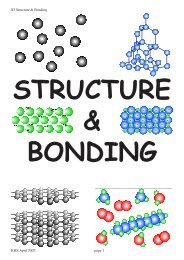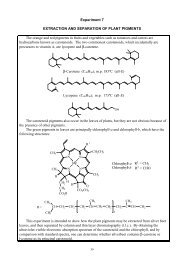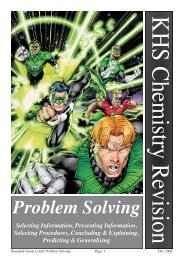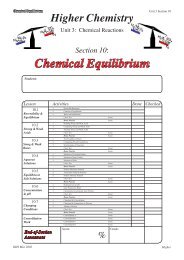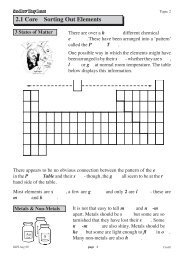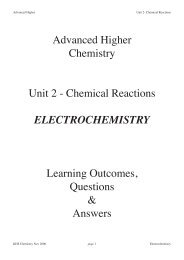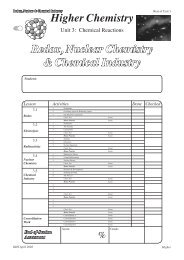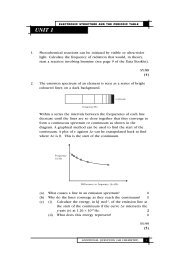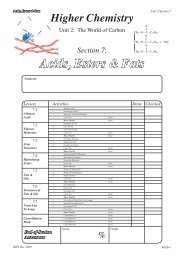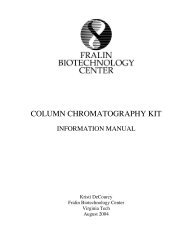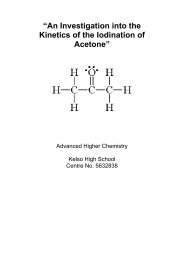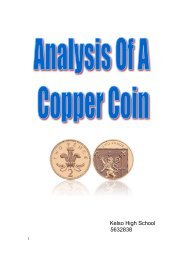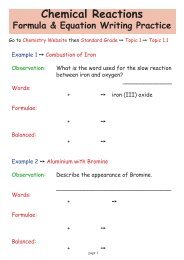2003 Chemistry Higher Finalised Marking Instructions - eduBuzz
2003 Chemistry Higher Finalised Marking Instructions - eduBuzz
2003 Chemistry Higher Finalised Marking Instructions - eduBuzz
You also want an ePaper? Increase the reach of your titles
YUMPU automatically turns print PDFs into web optimized ePapers that Google loves.
<strong>Higher</strong> <strong>Chemistry</strong><br />
General information for markers<br />
The general comments given below should be considered during all marking.<br />
1 Marks should not be deducted for incorrect spelling or loose language as long as the meaning of<br />
the word(s) is conveyed.<br />
Example: Answers like 'distiling' (for 'distillation') and 'it gets hotter' (for 'the temperature rises')<br />
should be accepted.<br />
2 A right answer followed by a wrong answer should be treated as a cancelling error and no marks<br />
should be given.<br />
Example: What is the colour of universal indicator in acid solution?<br />
The answer 'red, blue' gains no marks.<br />
3 If a right answer is followed by additional information which does not conflict, the additional<br />
information should be ignored, whether correct or not.<br />
Example: Why can the tube not be made of copper?<br />
If the correct answer is related to a low melting point, 'It has a low melting point and<br />
is coloured grey' would not be treated as having a cancelling error.<br />
4 Full marks are usually awarded for the correct answer to a calculation on its own; the part marks<br />
shown in the marking scheme are for use when working is given. An exception is when<br />
candidates are asked to ‘Find, by calculation, …..’.<br />
5 A half mark should be deducted in a calculation for each arithmetic slip.<br />
6 A half mark should be deducted for incorrect or missing units only when stated in the marking<br />
scheme. No marks should be deducted for incorrect or missing units at intermediate stages in a<br />
calculation.<br />
7 Where a wrong numerical answer (already penalised) is carried forward to another step, no<br />
further penalty is incurred provided the result is used correctly.<br />
8 Ignore the omission of one H atom from a full structural formula provided the bond is shown.<br />
9 With structures involving an –OH or an –NH2 group, a half mark should be deducted if the 'O' or<br />
'N' are not bonded to a carbon, i.e. OH–CH2 and NH2–CH2.<br />
10 When drawing structural formulae, a half mark should be deducted if the bond points to the<br />
'wrong' atom, eg<br />
OH<br />
C C<br />
11 A symbol or correct formula should be accepted in place of a name unless stated otherwise in<br />
the marking scheme.<br />
12 When formulae of ionic compounds are given as answers it will only be necessary to show ion<br />
charges if these has been specifically asked for. However, if ion charges are shown, they must be<br />
correct. If incorrect charges are shown, no marks should be awarded.<br />
Page 2



